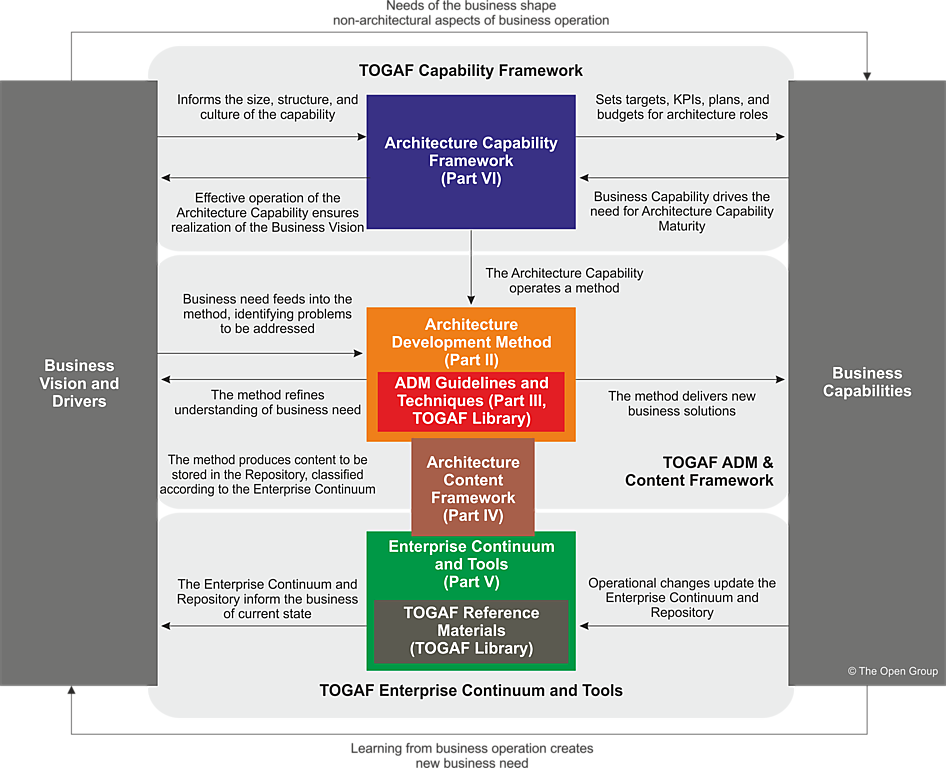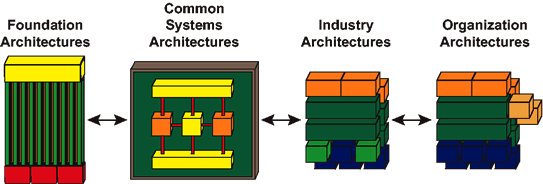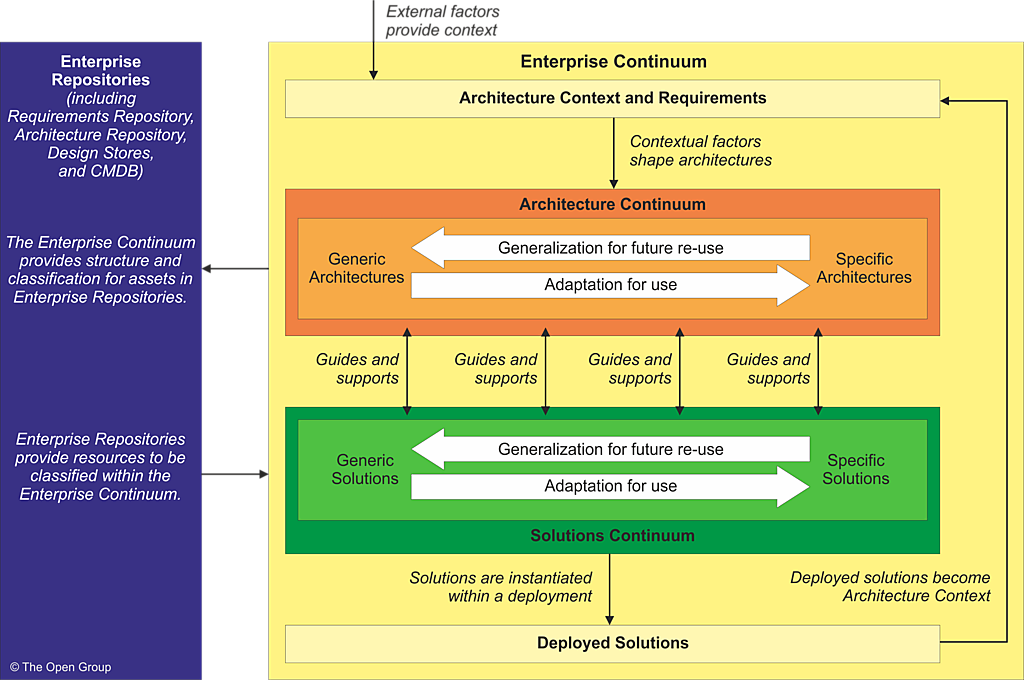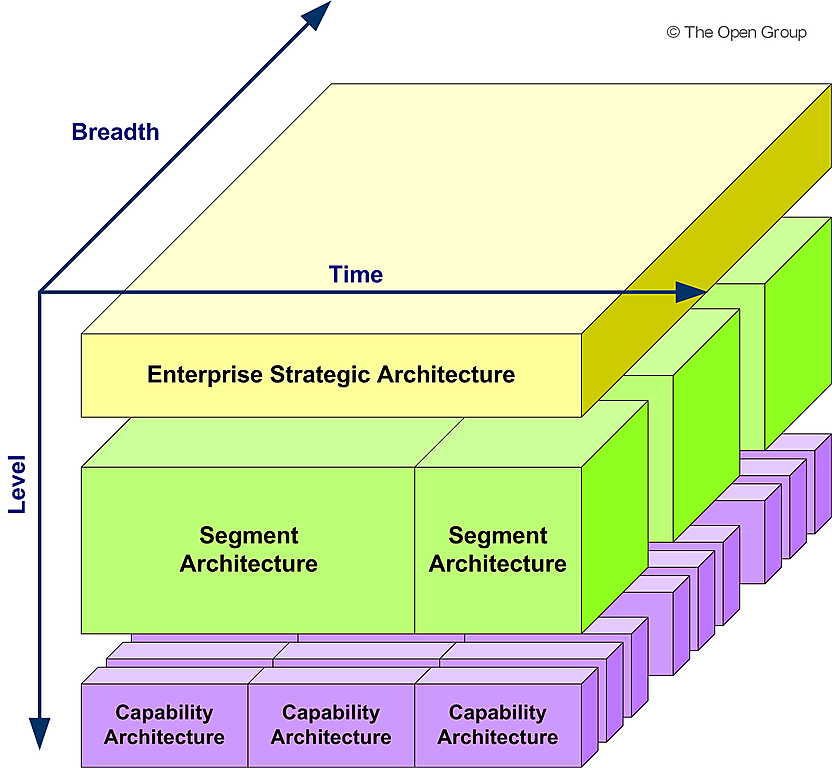Home » Archives for October 2024 » Page 4
Developing enterprise architecture (EA) projects requires a clear understanding of the different types of architectures needed to satisfy varied stakeholder requirements at various organizational levels. Each architecture does not function in isolation; rather, it exists within a governance hierarchy. Broad architectures provide overarching direction for more specific, detailed architectures. To effectively develop these architectures, organizations can utilize the Architecture Development Method (ADM) in two primary strategies: iterating within a single ADM cycle or employing a hierarchy of concurrent ADM processes. This article outlines these strategies and offers guidance on implementing them. 1. Developing…
continue reading →
Introduction Change management is a critical discipline within the realm of Enterprise Architecture (EA) that focuses on preparing, supporting, and helping individuals and organizations in making organizational change. As organizations evolve, whether through technological advancements, shifts in business strategy, or changes in market conditions, effective change management becomes essential for ensuring that architecture initiatives are successfully adopted and integrated. This article explores what change management is, why it is important in the context of Enterprise Architecture, and how organizations can implement effective change management practices. What is Change Management? Change management refers to…
continue reading →
Introduction Stakeholder management is a critical discipline for architecture practitioners, particularly within the TOGAF (The Open Group Architecture Framework) framework. By effectively managing stakeholders, architects can win support for their projects and ensure success where others may struggle. This article explores the what, why, and how of stakeholder management, highlighting its significance and practical implementation within the context of architectural projects. What is Stakeholder Management? Stakeholder management involves identifying, analyzing, and engaging individuals or groups who have an interest in or influence over a project. In the context of architecture, stakeholders can include…
continue reading →
Introduction Gap Analysis is a crucial technique used in the TOGAF (The Open Group Architecture Framework) Enterprise Architecture (EA) framework. It helps organizations assess the differences between their current state and desired future state architectures. By identifying these gaps, organizations can develop actionable strategies to bridge them, ensuring alignment with business goals and improved overall effectiveness. This article explores the significance of Gap Analysis within the TOGAF framework, detailing why it is essential, what it entails, and how to apply it effectively. Why Use Gap Analysis in TOGAF? 1. Alignment with Business Goals…
continue reading →
Introduction Principles are foundational rules and guidelines that help organizations fulfill their mission. They are designed to be enduring and infrequently amended, serving as a compass for decision-making and action across various domains. Within the context of enterprise architecture (EA), principles play a crucial role in guiding the development and utilization of architectural frameworks. This article explores the significance of enterprise principles and architecture principles, their hierarchical relationship, and their role in effective architecture governance. The Role of Principles in Organizations Principles serve as a cornerstone for organizations, providing a structured set of…
continue reading →
Introduction In today’s rapidly evolving business landscape, organizations must have a robust Enterprise Architecture (EA) capability to remain competitive. Establishing a sustainable EA practice can significantly enhance the ability to maximize investments, identify new opportunities, and manage risks effectively. The TOGAF (The Open Group Architecture Framework) Architecture Development Method (ADM) provides a structured approach to developing this capability, ensuring it is customer-focused and value-adding. The Role of TOGAF ADM in EA Capability The TOGAF ADM is not merely a project management tool; it is a comprehensive methodology designed to support the establishment of…
continue reading →
Introduction TechSolutions Inc., a mid-sized software development company, faced significant challenges in managing its enterprise architecture. With a growing portfolio of products and services, the company struggled to ensure alignment between its business objectives and the architectural frameworks guiding its development efforts. To address these challenges, TechSolutions decided to implement the TOGAF Enterprise Continuum as part of its enterprise architecture strategy. Background Company Profile Name: TechSolutions Inc. Industry: Software Development Employees: 500+ Headquarters: San Francisco, CA Key Products: Custom software solutions, cloud services, and mobile applications. Challenges Misalignment of Business and IT: The…
continue reading →
The Enterprise Continuum is a fundamental concept in the TOGAF (The Open Group Architecture Framework) that provides a structured approach for classifying and organizing architecture and solution assets within an organization. It serves as a framework for understanding the relationships between various architectural components and ensuring that they align with the overall enterprise strategy. Overview of the Enterprise Continuum The Enterprise Continuum is partitioned into three distinct continua: The Enterprise Continuum The Architecture Continuum The Solutions Continuum These continua collectively help enterprises manage and leverage their architectural assets effectively. 1. The Enterprise Continuum…
continue reading →
Introduction The Enterprise Continuum is a vital concept within the TOGAF (The Open Group Architecture Framework) that provides a structured approach to classifying architecture and solution artifacts. It encompasses both internal and external components of the Architecture Repository, illustrating how these artifacts evolve from generic Foundation Architectures to Organization-Specific Architectures. This article explores the significance of the Enterprise Continuum, its role in facilitating effective communication among stakeholders, and its impact on maximizing architecture investments. The Structure of the Enterprise Continuum Classification of Artifacts The Enterprise Continuum serves as a framework for organizing various…
continue reading →
Overview In the realm of Enterprise Architecture (EA), the TOGAF (The Open Group Architecture Framework) EA Landscape serves as a conceptual framework that organizes the various architectures present within an enterprise. Given the complexity and diversity of architectural needs in an organization, it is essential to structure these architectures effectively. The TOGAF standard employs the concepts of levels and the Enterprise Continuum to provide clarity and organization within the Architecture Landscape. Complexity of the Architecture Landscape In a typical enterprise, multiple architectures might exist simultaneously, each serving different purposes. Some architectures are tailored…
continue reading →





